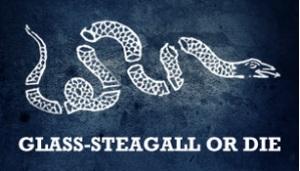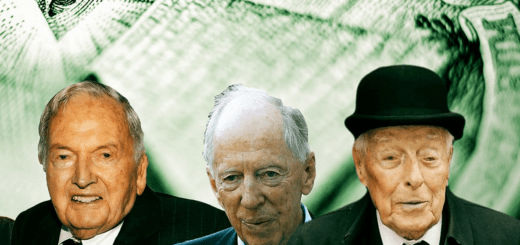Glass-Steagall or Die? Which Will It Be?

Just How Bad is it?
Estimates are that the current magnitude of outstanding derivatives claims accumulated as a product of speculative financial practices (read: gambling debts), now measures in the hundreds of trillions of dollars, perhaps reaching even to quadrillions. Even when compared to the current nominal global GDP, estimated at around $70 trillion, it becomes immediately apparent that this debt can never be paid. The vast majority of these outstanding claims are of a purely speculative character, with absolutely no connection to legitimate, necessary, productive economic activity. To continue to bail out this vast bubble of gambling obligations on the back of a collapsed and rapidly shrinking real economy, would be to create, rapidly, Weimar-style hyperinflation on a global scale, and an economic crisis of Dark Age proportions.
Glass-Steagall halts this catastrophe. By restoring the separation between commercial and investment banking, Glass-Steagall divides the obligations in question into two distinct and separate categories: legitimate and illegitimate, the latter being far greater than the former. Immediately, we declare that the government has no responsibility to pay back losses accrued through speculative activity, thus transferring these trillions in liabilities off of the government’s books. We force the megabanks—JP Morgan Chase, Citigroup, Morgan Stanley, etc.—to split themselves in two parts: the so-called “investment arms” on the one side, and plain, old-fashioned commercial banking on the other.
Under the original Glass-Steagall law, only commercial banks receive federal guarantees; “investment houses” do not enjoy such protection. Though their trillions in outstanding “assets” might not be explicitly cancelled or eliminated by law, we will simply declare that these debts are their own, their responsibility, and not the American people’s. Not one penny of bailout goes to pay them off, and, without this artificial protection, these assets will quickly dry up on their own. We as a nation are freed from this cancer, and our commercial banking system is restored to its necessary and indispensable function. This was the stated intention of Franklin Roosevelt’s original 1933 Glass-Steagall Act.
Comment: The time to act is now. Call your Congressperson and Demand Glass-Steagall to save your savings, pensions, and prevent hyperinflation. 202-224-3121. To wait until the middle of the collapse is the same as waiting until everyone is infected with the Coronavirus and then acting. Call President Trump and Ask him to Implement Glass-Steagall and FDR’s Pecora Commission to Investigate Bankster Fraud. 202-456-1414















